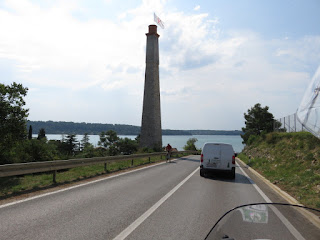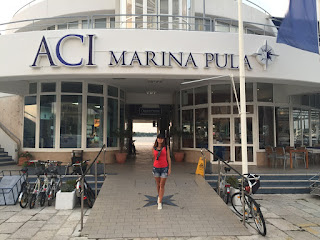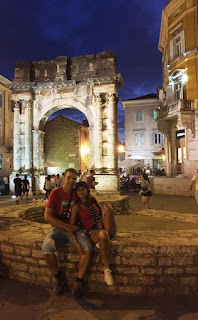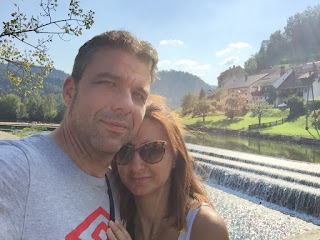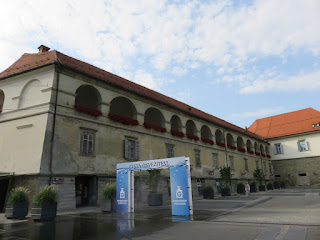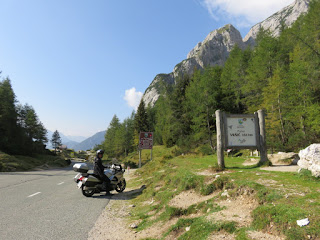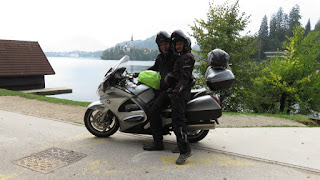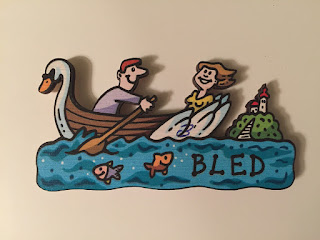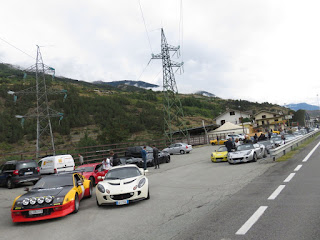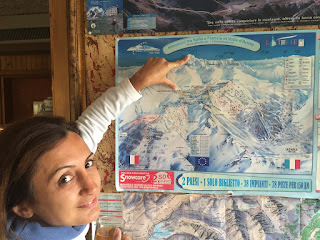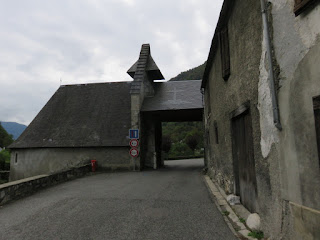An unexpected trip...
First we would like to thank Alan and Veronica because they are the ones behind this trip.
We met Alan and Vi on March 2016 in a restaurant in Albarracin then we saw them one more time at Getxo last year.
Basically we met twice and here is the point: We don't have a deep, neither a long friendship and though we can say that Alan and Vi have a beautiful spirit full of life.
So Alan sent us an email encouraging us again to visit Jávea, offering his house to stay and organizing places to visit. He advised us to go there meanwhile the "Fallas of Valencia" but we could manage to have few days off (21 to 26 of March) after that party. We just wished that we could coincide with Alan and Vi there. Hopefully we will meet soon somewhere.
We see Alan and Vi as a couple who loves traveling, enjoying life and seeing others enjoying. And we did enjoy our stay at Jávea; this short video is a summary of photos about our time there and the scenic views of mountains and sea in the area, followed by a summary of information about the places that we visited.
First we would like to thank Alan and Veronica because they are the ones behind this trip.
We met Alan and Vi on March 2016 in a restaurant in Albarracin then we saw them one more time at Getxo last year.
Basically we met twice and here is the point: We don't have a deep, neither a long friendship and though we can say that Alan and Vi have a beautiful spirit full of life.
So Alan sent us an email encouraging us again to visit Jávea, offering his house to stay and organizing places to visit. He advised us to go there meanwhile the "Fallas of Valencia" but we could manage to have few days off (21 to 26 of March) after that party. We just wished that we could coincide with Alan and Vi there. Hopefully we will meet soon somewhere.
We see Alan and Vi as a couple who loves traveling, enjoying life and seeing others enjoying. And we did enjoy our stay at Jávea; this short video is a summary of photos about our time there and the scenic views of mountains and sea in the area, followed by a summary of information about the places that we visited.
Note: This video is in low resolution preferably to see it through a phone and not on big screen.
The music from bensound.com
So we drove around 730km from the north to the south of Spain, leaving the snow and the rain behind on the first day of Spring.
Jávea is a lovely town with beautiful houses and lot of NON Spanish people. The old port is a nice place and at night must be visited for eating and drinking. Jávea is situated on the back side of the Montgó mountain which rises to 753m and from the Xàbia side, Montgó is often said to resemble the head and trunk of an elephant. There is an easy part for hiking before starting the steady climb, we didn't reach to the top because we were not well prepared for that hike, and the views from the Montgó are amazing.
The area is called "Marina Alta" and during our stay, we visited the villages situated in the mountains and the ones on the coast and both sides are charming.
Let's start from the mountains side where we drove through the different valleys, which the Moors occupied its territory for almost six centuries: Vall de Gallinera, Vall de Alcala, Vall de Ebo, Vall de Laguart, Vall de Pop. Each village on the way is calling you to stop and discover its corners full of history. It is obvious that the main business of the area is the cultivation of cherries, almonds and olives and the rural tourism. B was so happy because we could eat small green almonds like they do in Lebanon.
One of the places that we would like to tell you about is Castell de Guadalest, located in a mountainous area of the comarca of Marina Baixa, and where JC found out that there was a museum of classic motorbikes. After visiting the museum we enjoyed a bocadillo in the restaurant beside which belongs to the same owner. The village itself is beautiful and full of things to do, one is visiting the museum of Microminiatures of Manuel Ribera Girone.
"In 1974, El Castell de Guadalest is declared historic - artistic. In 2015 , after overcoming a series of audits, the municipality is part of "The Most Beautiful Villages in Spain" and in 2016 enters the Federation of the most beautiful towns in the world."
I don't think that we should say more... Castell de Guadalest must be visited!
The sea side is picturesque: Dénia is a big town located on the Costa Blanca half way between Valencia and Alicante. The main sight is its castle on a rocky crag overlooking the city and which was built during the 11th and 12th centuries.
The area has typical beautiful and peaceful beaches, some sandy others stony. The coast side is a collection of beaches and pine-covered cliffs that stands a short distance from the shore. There are plenty of Capes and stunning walks in addition to swimming and relaxing: Cap Prim, Cala Blanca, Cap Negre, Cap de la Nau, Playa de la Granadella, Cumbre del sol... and the next day we continued moving on the coast until Benidorm where we spent the afternoon and in our opinion, Calp and Vila Joiosa and Moraira are more worth to visit.
In Calp, many Iberian, Roman and Arab archeological sites exist because of its strategic coastal location. Its economy is based mainly on tourism and fishing so you can't miss eating seafood in one of its restaurants.
The Penyal d'Ifac, natural park in Calp is a massive limestone outcrop emerging from the sea and linked to the shore by rock debris. It is a home of numerous plants and birds, rises to 332 meters high, this rock is a striking visual feature of the Mediterranean coastline. Historically it was known to the Phoenicians (B ancestors) as the Northern Rock, to distinguish it from its southern counterpart, the Rock of Gibraltar. Not to miss, because we spent a magnificent evening contemplating the sunset from the top of The Penyal d'Ifac.
We think that on summer time all the area will be crowded and even though we couldn't enjoy a swim, we think that we did well choosing to visit during the low season, we had sunny days with a cool breeze which was perfect for us.
The diversity of international people living in the area gives a different spirit: the architecture of the houses, the decoration of the bars, the big choice of international restaurants, the products in the supermarkets...
We want to mention as well that the area was full of cyclists enjoying the perfect weather for cycling and maybe our next visit will include some cycling activities.
To end our brief story we would say that we will go back again and we will visit some corners that we didn't have enough time to do and to walk "Barranco del infierno" considered as "La Cathedral del Senderismo".
We would like to thank again Al&VI for making our stay there comfortable in their beautiful house.
Cheers for life and for discovering our beautiful planet!











































